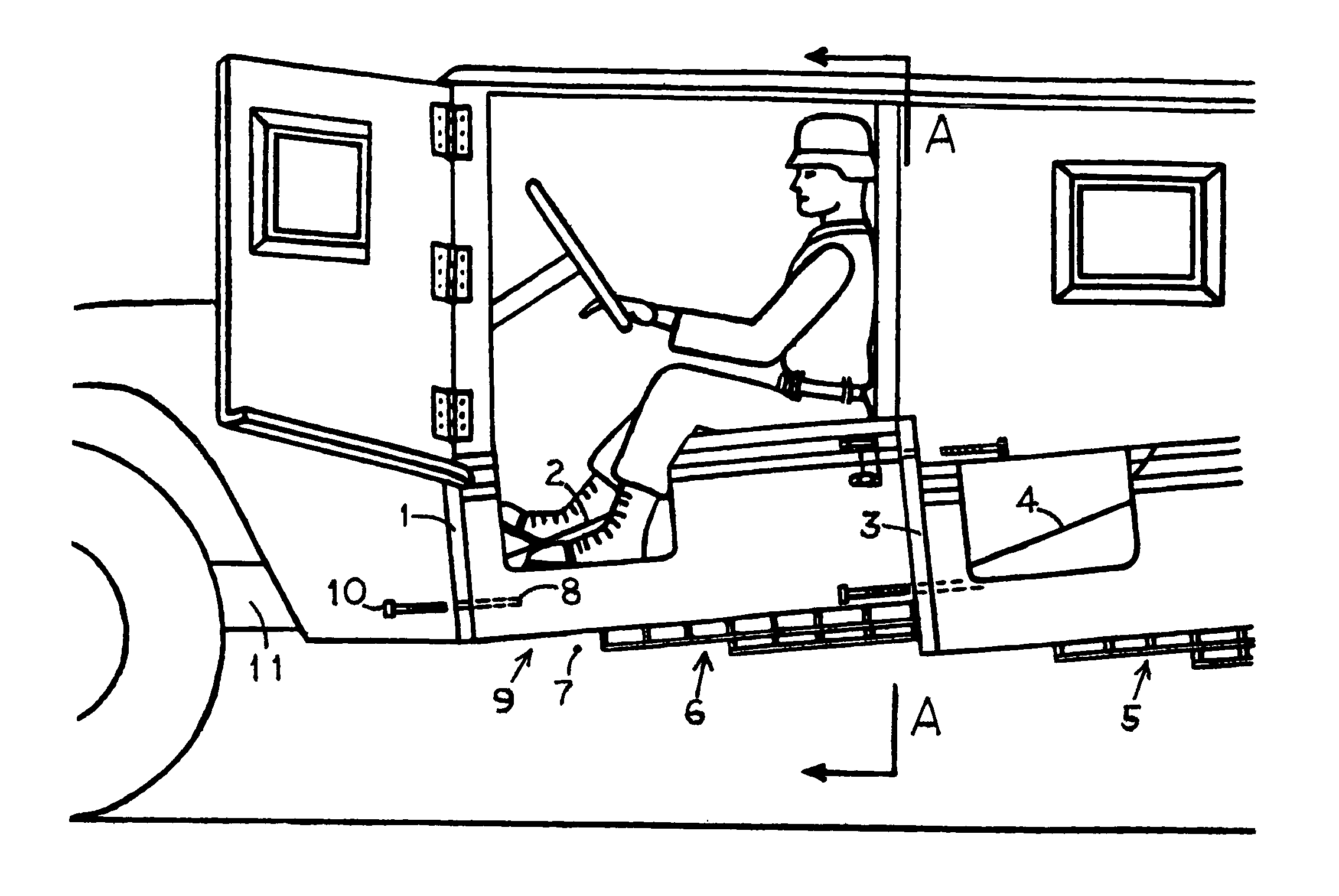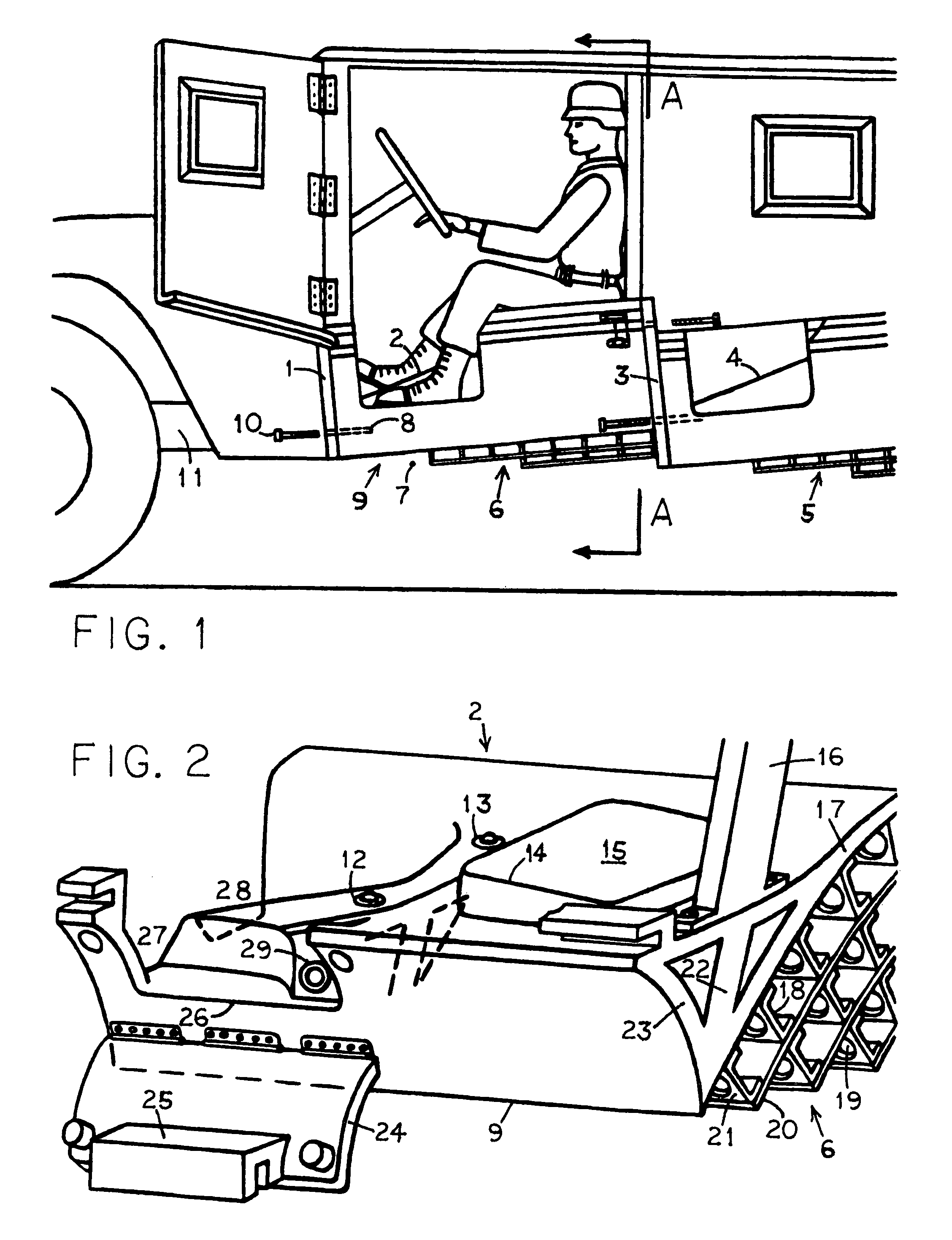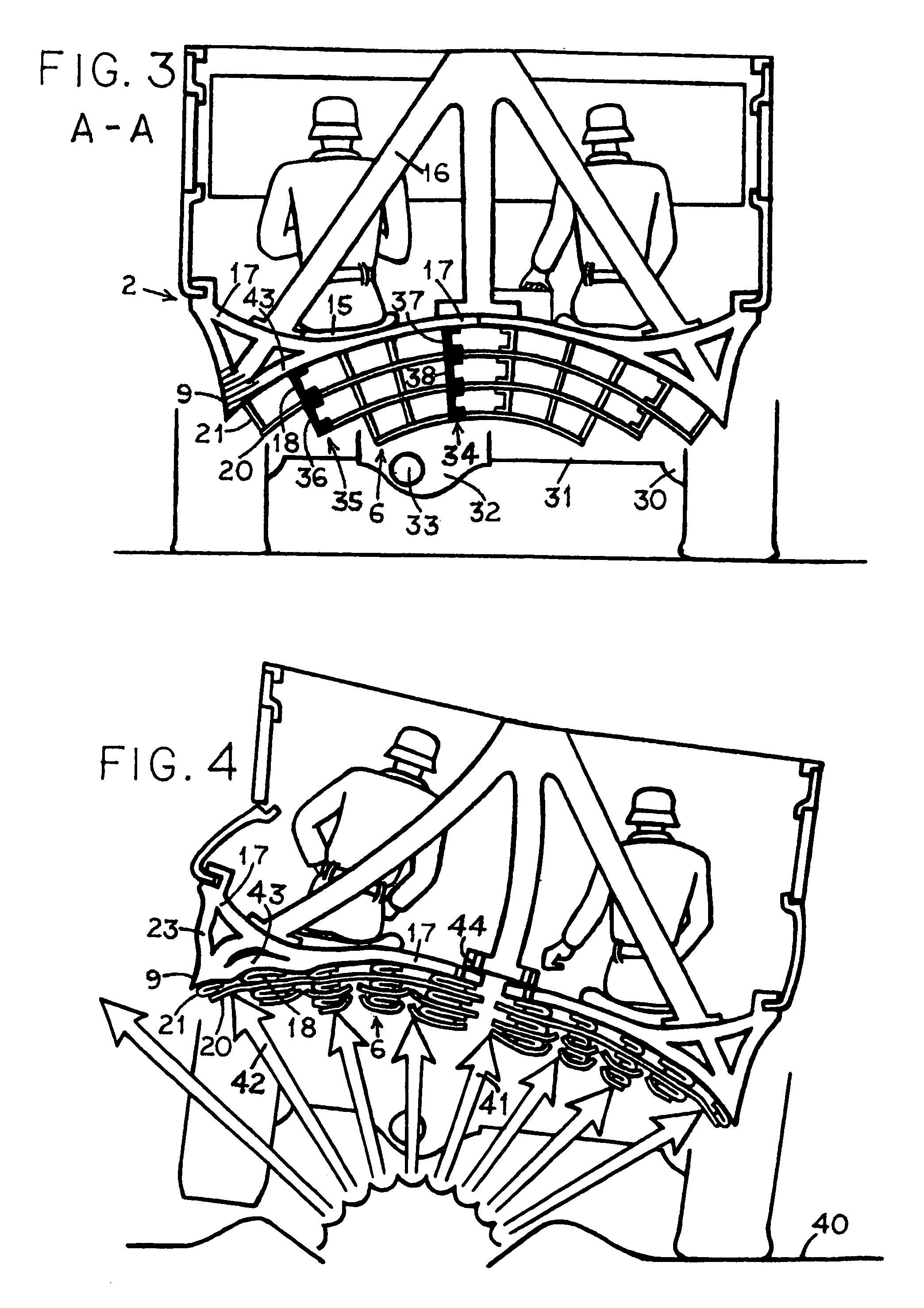Mine protection for vehicle
a vehicle and protection technology, applied in the field of vehicle protection, can solve the problems of requiring a massive support arrangement, heavy and expensive, and collapse under a mine explosion, and achieve the effects of reducing the breaking force of explosions, saving weight, and enhancing frame strength
- Summary
- Abstract
- Description
- Claims
- Application Information
AI Technical Summary
Benefits of technology
Problems solved by technology
Method used
Image
Examples
Embodiment Construction
[0021]FIG. 1 is a side view of a military utility vehicle patterned after the U.S. Army's “Humvee”. Modifications are made below the passengers to protect them from mine explosions. This document will only look at driver protection. The mines are buried below or beside the vehicle, and sample explosion and damage scenarios will be shown in later figures. For now, the new equipment is designated as a stack 6 and a wedge 9. The driver sits in sculpted platform 2 which is somewhat like a bathtub, in that it encloses the driver from below. Wedge 9 is mainly intended to protect the driver from a mine explosion at the edge of the vehicle. Stack 6 will protect from a mine explosion under the vehicle. Platform 2 construction is examined first.
[0022]FIG. 2 shows platform 2 slightly from above and the rear. Line 14 of seat cushion 15 will be horizontal, so platform 2 is actually at a downward slant like in FIG. 1. The main parts which deal with driver seating are back brace 16, seat cushion 1...
PUM
 Login to View More
Login to View More Abstract
Description
Claims
Application Information
 Login to View More
Login to View More - R&D
- Intellectual Property
- Life Sciences
- Materials
- Tech Scout
- Unparalleled Data Quality
- Higher Quality Content
- 60% Fewer Hallucinations
Browse by: Latest US Patents, China's latest patents, Technical Efficacy Thesaurus, Application Domain, Technology Topic, Popular Technical Reports.
© 2025 PatSnap. All rights reserved.Legal|Privacy policy|Modern Slavery Act Transparency Statement|Sitemap|About US| Contact US: help@patsnap.com



